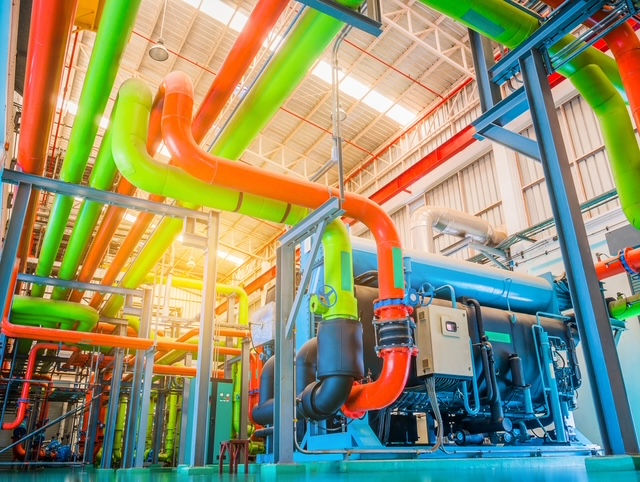Reopening after COVID-19: IAQ Measures for Safeguarding your Workforce
- MSC
- May 21, 2020
- 2 min read
As businesses begin the process of reopening their buildings and welcoming employees back to work, employers are implementing numerous measures aimed at preventing transmission of COVID-19 within the workplace. Interim guidelines issued by the CDC and OSHA include recommendations for improving building ventilation systems including increasing outdoor air, upgrading filtration, and running HVAC systems for longer hours to increase air exchanges.

In addition to these effective strategies, MSC also recommends a number of additional proactive contaminant source control measures, particularly our three-step Back-In-Building (BIB) process designed to actively improve indoor air quality (IAQ), reduce airborne disease transmission, and instill building occupants with greater confidence in the air that surrounds them.
The first step is the mechanical cleaning of evaporator coils, condensate pans, and air handler interiors to remove visible dirt, dust, pollen, biofilm growth, and other accumulated materials that can restrict airflow and disperse pollutants throughout interior spaces.
Next, evaporator coils, condensate pans, and AHU interiors are sanitized using an HVAC system-safe EPA List N: Disinfectant for Use Against SARS-CoV-2. These products are also proven effective against influenza, rhinovirus, tuberculosis, rotavirus, streptococcus, staphylococcus, E-coli, salmonella, hepatitis, and HIV, as well as mold and mildew.
Once coils and AHUs have been cleaned and disinfected, BIB step three is installation of a proactive air-cleaning system proven effective against airborne pathogens. A notable technology we’ve installed in our own offices and are recommending to clients is bipolar ionization (BPI). BPI effectively kills viruses, mold and bacteria, reduces airborne particles, neutralizes odors and saves energy by reducing outdoor air intake needs. Millions of positively- and negatively-charged ions are continually distributed via the airstream throughout the building space, where they surround pathogens and mold and deactivate them by removing the hydrogen needed to survive. Airborne particles like dust, pollen and dander become charged and cluster together, increasing their mass and allowing for improved filtration capture. Needlepoint bipolar ionization (NBPI) is MSC’s preferred BPI technology as it does not produce ozone, unlike traditional corona discharge devices. Though BPI/NBPI has not yet been tested specifically against SARS-CoV-2, it has been proven effective against human coronavirus 229E, influenza, norovirus, TB, MRSA, staphylococcus, E-coli, Legionella, and C-diff.
MSC also recommends ultraviolet germicidal irradiation (UVGI, or UV-C) as a proven, cost effective method of eliminating microbial growth in HVAC systems and circulated air. By controlling biofilm growth that proliferates in HVAC systems, UVGI coil treatment can substantially restore system capacity, improve IAQ, and reduce maintenance costs. Payback on UVGI systems can occur in as little as six months due to reduced utility costs. Unlike BPI, however, UVGI does not actively treat in-room air, and in-duct UVGI systems are limited due to moving airstream exposure time.
For more information on Back-In-Building preparations for reopening your workplace, or to learn more about BPI, NBPI, UVGI, coil cleaning and disinfection, dilution ventilation, filtration (MERV) upgrade, or photocatalytic oxidation (PCO), reflective electromagnetic oxidation, or any other method of improving indoor air quality, please contact MSC at 973-884-5000.




Comments